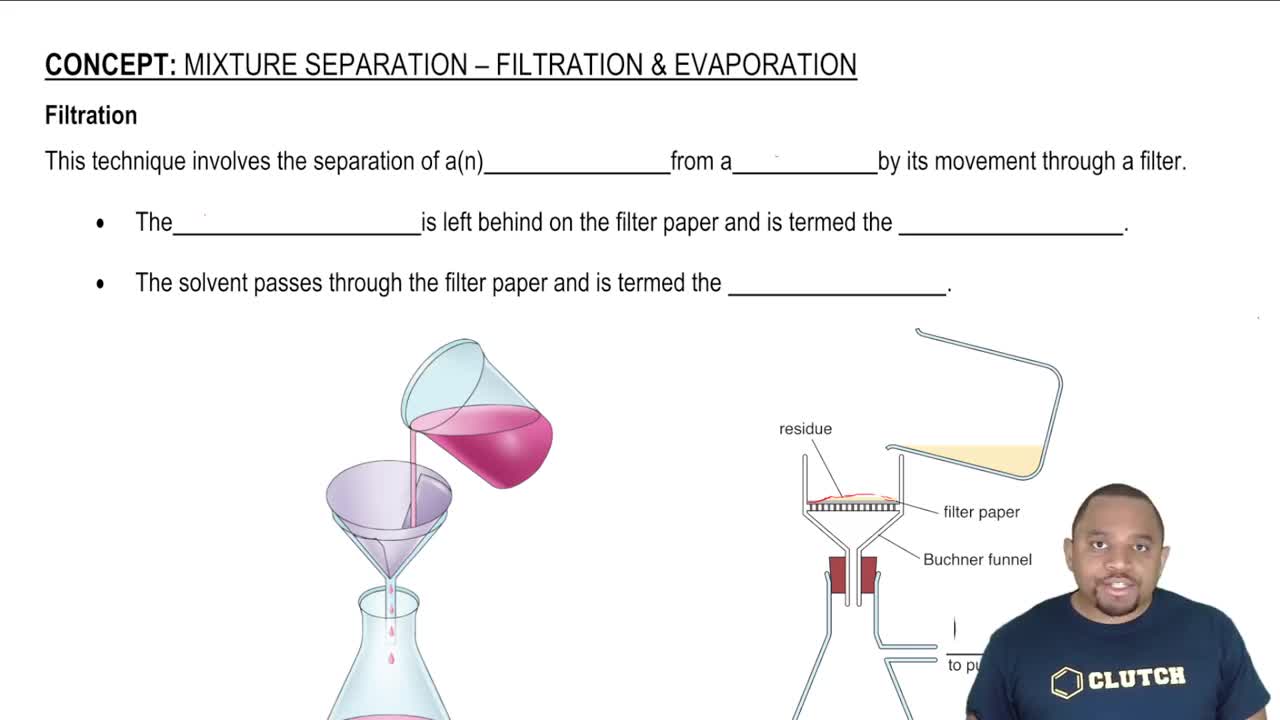Here are the essential concepts you must grasp in order to answer the question correctly.
Surface Area and Evaporation
The rate of evaporation of a liquid is influenced by its surface area. A larger surface area allows more molecules to escape into the vapor phase, increasing the rate of evaporation. In this case, the dish with a diameter of 12 cm has a greater surface area compared to the beaker, which will lead to faster evaporation of the water in the dish.
Recommended video:
Filtration and Evaporation
Vapor Pressure
Vapor pressure is the pressure exerted by a vapor in equilibrium with its liquid at a given temperature. It is a measure of the tendency of molecules to escape from the liquid phase into the vapor phase. The vapor pressure of water remains the same regardless of the container's shape or size, as long as the temperature is constant, meaning it does not differ between the beaker and the dish.
Recommended video:
Raoult's Law and Vapor Pressure
Temperature and Evaporation Rate
The temperature of a liquid significantly affects its evaporation rate. Higher temperatures increase the kinetic energy of molecules, leading to a higher rate of evaporation. In both containers, if the temperature is constant, the primary factor affecting evaporation will be the surface area, but temperature changes can also influence the overall process.
Recommended video:
Filtration and Evaporation

 Verified step by step guidance
Verified step by step guidance

